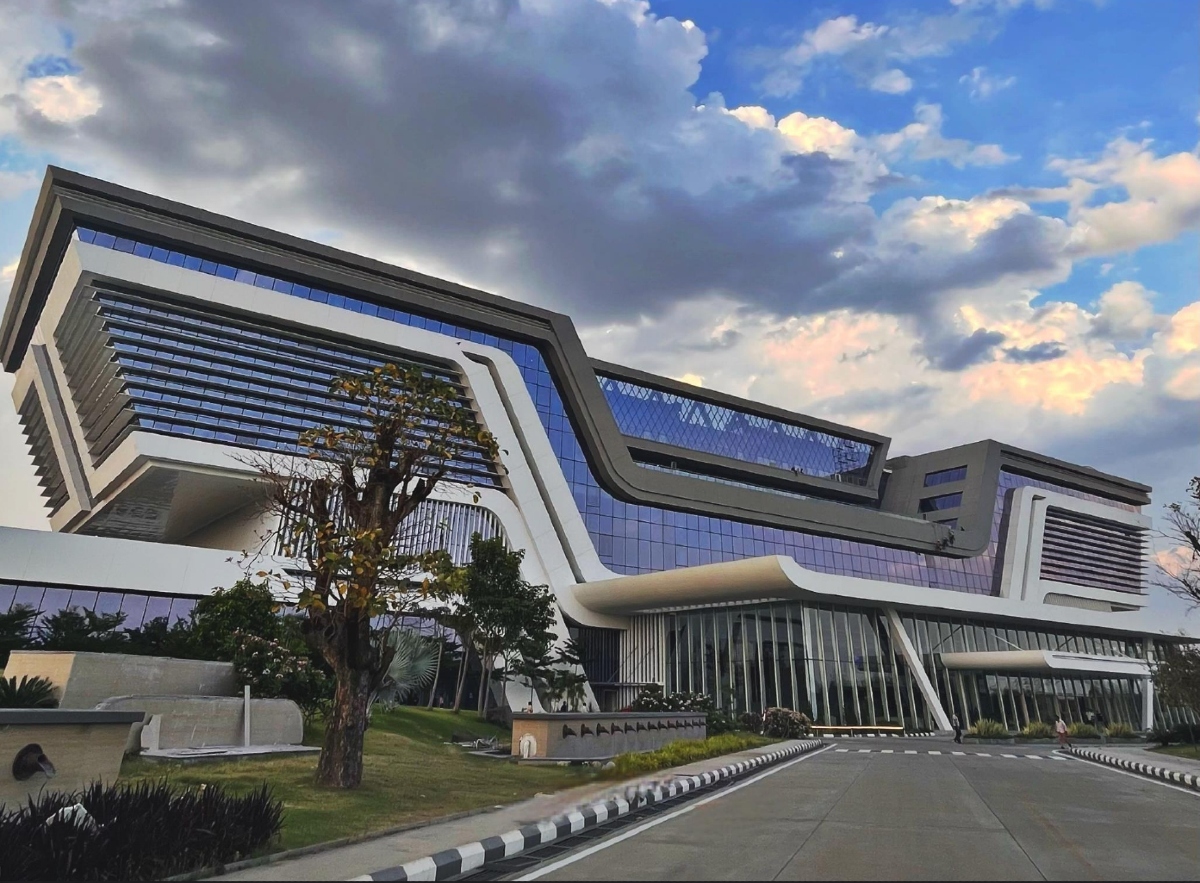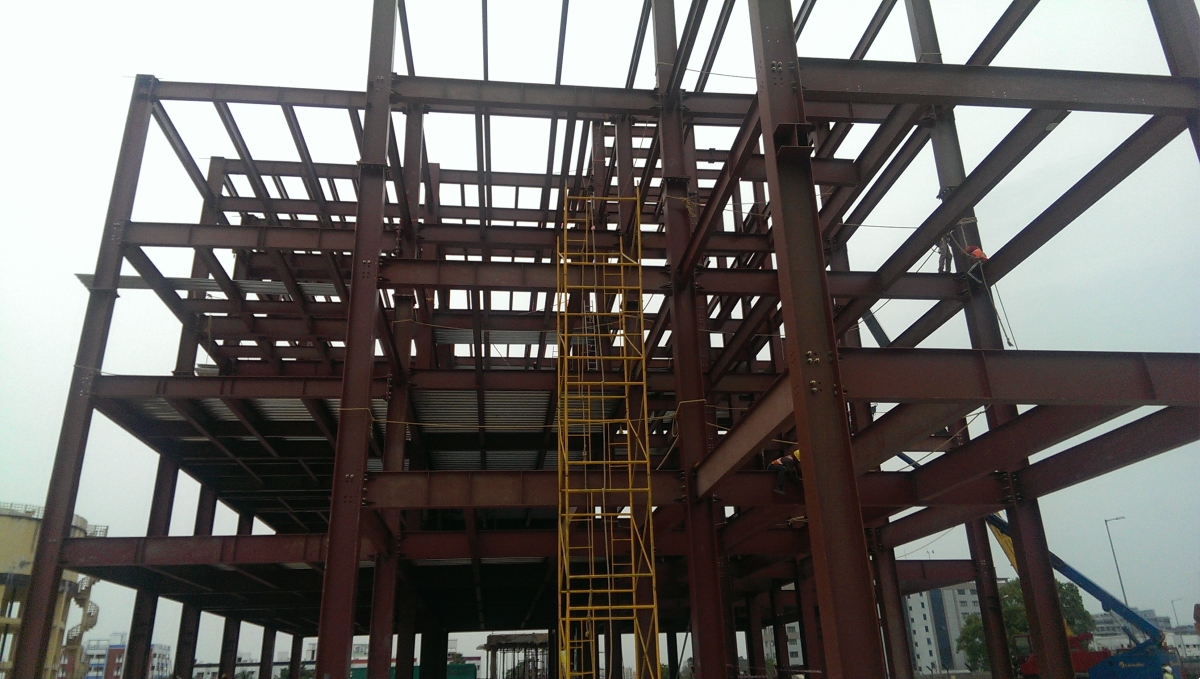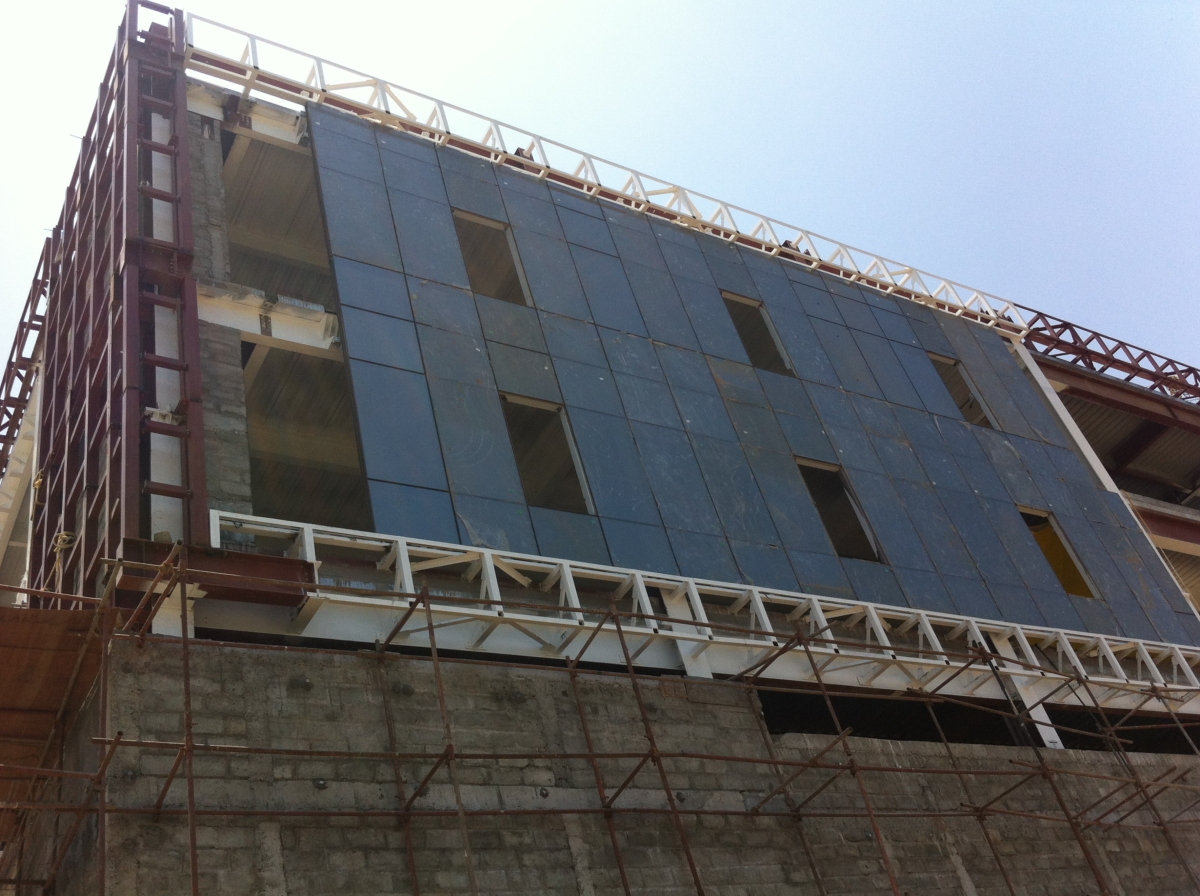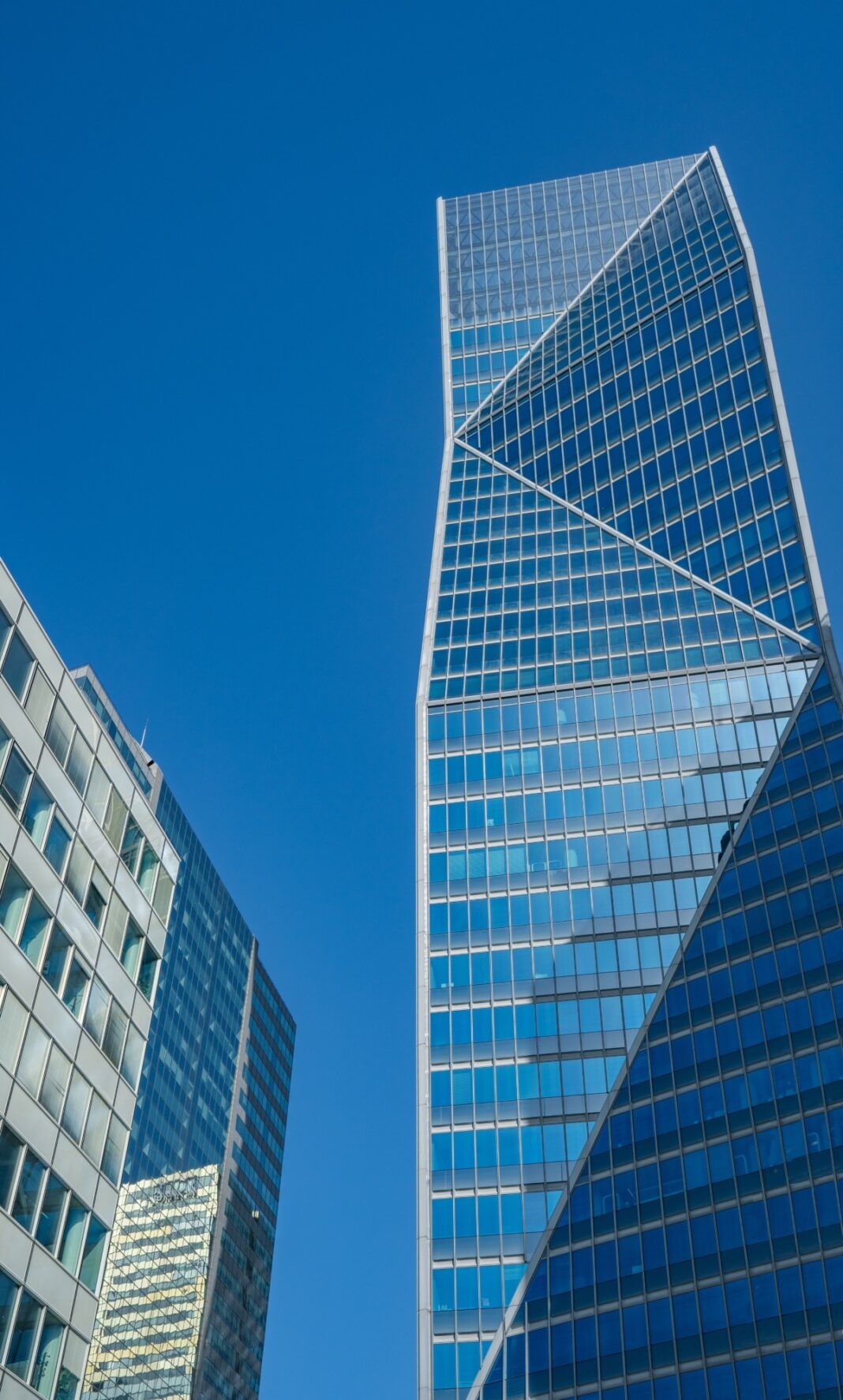Globally, steel and skyscrapers have maintained a strong partnership for over a century, facilitating major advancements in building technology. As tall buildings transformed urban landscapes, steel remained the preferred material for their primary structural systems due to its affordability and durability. Innovations in specifications, particularly focusing on very high-strength steel, offer potential reductions in steel usage in buildings.
Today, the steel industry remains dedicated to skyscraper construction, continually improving through innovations in specifications, design methods, and evaluation ideologies. These advancements aim to create cost-effective and optimised buildings for both present and future needs.
However, amidst growing concerns for sustainable development, there has been confusion regarding steel’s place in high-rise construction, fueled by debates over its affordability, safety, and environmental impact. This has especially been true for India with its increased focus on reducing carbon emissions and rising import costs while maintaining a fast pace of construction.
Building up
For Hiten Sethi, CEO, Hiten Sethi & Associates, steel as a material, presents potential, “In recent decades, structural engineering has undergone a Renaissance, reshaping the very essence of high-rise architecture. Steel, a robust building material, stands as a testament to technological innovation. We’ve witnessed the birth of remarkably strong yet lightweight steel alloys, enabling us to craft skyscrapers that seemingly defy gravity.”
But Abhijit Antarkar, Director, Antarkar Consulting Engineers, displays a cautious outlook, “Use of structural steel in high-rise buildings has been very limited in India, despite its significant potential to transform the construction industry. It is general practice to economise the design to match the initial cost with RCC construction, which I feel, may not be possible. It is crucial for all stakeholders to understand this beforehand.”
Nevertheless, he adds that steel construction may still be more economical and cost-effective than RCC construction, considering the speed and early business revenues.
Majid Hashmi, Managing Director, KMH Engineering, stresses on functionality dictating the choice of material, “High-rise buildings fall into a few categories. IT buildings have fewer partitions, more transparency, larger spans, and no wait areas; in such cases, steel is the ideal choice for up to 30-40 m. Residential buildings, on the other hand, often have numerous pockets of wait areas, such as toilets and kitchens, and partitioned areas like block walls, making structural steel impractical. While such structures exist in cities like Chicago and New York, they employ dry fixings and modified toilets, unlike the conditions in India.”

Antarkar elaborates that although there are fewer Indian codes specifically for structural steel high-rise buildings, there are abundant references and literature available worldwide for structural engineers to use as a guideline for designing such buildings. “Structural steel buildings need to be appropriately configured and designed considering wind, seismic strength and ductility requirements. Use of the parent IS code for steel and recently published IS code for earthquake-resistant design and detailing along with embracing international good practices shall give safe, stable and economical design.”
But the story doesn’t end with steel. Construction practices have undergone dramatic transformation. Sethi highlights a recent project, “Using cutting-edge precast technology, as PMC, we recently completed a staggering G+12 storey structure in just 96 days for CIDCO PMAY, setting a new standard for speed and efficiency. A perfect example of architectural engineering and construction technology coming together to achieve the impossible.”
Smart building or building smart?
Hashmi recommends steel cautiously, “For spans, if they’re less than 8 m, I don’t recommend structural steel; concrete would be more cost-effective. For spans exceeding 8 m, steel is highly preferable and may even be more economical than concrete. Structural steel offers functional advantages, providing more space, especially suitable for office spaces requiring large spans for partition walls. However, for residential buildings, concrete is preferable.”
While Antarkar agrees on the cost, he highlights the higher speed of construction, “Given the higher cost of steel construction compared to RCC structure, it becomes essential to offset this cost by the accelerated pace of construction. Early revenues can mitigate the higher cost to a large extent and also prove more economical than RCC construction if effectively planned and executed.”
Meticulous planning at the design stage is essential to achieve this and there are numerous softwares available to integrate the design of various disciplines like architectural, structural, MEP and construction. During the design and detailing process, structural engineers can efficiently address various aspects such as aesthetics, services, and facades directly at the fabrication shop, thereby optimising the construction process to be smart, fast, and cost-effective.
Sethi lauds steel as a game-changer in the world of high-rises, “It’s more than just a building material – it’s the foundation for a whole new era of architectural innovation. Think about it this way. Steel’s incredible strength-to-weight ratio is like having a superpower. We can create these expansive, open floor plans that are perfect for integrating all sorts of cutting-edge technology.”
But steel’s not just about creating space, it’s about creating a smart infrastructure. The steel framework becomes the nervous system of the building, perfectly suited for embedding Internet of Things (IoT) devices.
He adds, “And let’s not forget the skin of the building – the facade. Smart facades, zero carbon facades using steel provide a rock-solid support system for all sorts of advanced features, like dynamic shading that adjusts to the sun or photovoltaic panels that harvest solar energy. It is beyond aesthetics – it’s about creating buildings that are not only beautiful but also environmentally responsible. Plus, steel’s strength is crucial for withstanding the harshest elements, from windstorms to earthquakes.”

Guarding the Heights
Ensuring fire safety stands as a paramount concern in the construction of towering structures. According to Antarkar, “Fireproofing may be the most overlooked part as of now, for steel structures. It is imperative to make the buildings safe by providing fireproof coating or covering along with appropriate firefighting provisions in the building. However, the high cost of fireproof coatings often limits their use. Use of fire-rated boards for columns and ceilings can be effectively used to enhance the fire resistance of the building. The use of concrete-encased composite members can effectively enhance the strength as well as the fire resistance.”
However, there is a prevailing sentiment that significant efforts are required to optimise the costs associated with these coatings. With a growing number of steel buildings being constructed, this aspect will garner increased attention in the industry.
Hashmi, however, highlights the developments, “In recent years, there has been significant development in fire protection materials and techniques, making them readily available in India. Previously, materials used in places like Europe or Dubai were not easily accessible in India, but this has changed in the last decade. Now, materials such as vermiculite sprays, fire-resistant paints, cladding, and encasing of concrete are readily obtainable.” These options provide similar levels of fire resistance as concrete buildings, ensuring enhanced safety measures.
“Steel itself is a non-combustible material, which is a good starting point,” says Sethi, “But the real key lies in how we protect it. We use special fireproofing materials, like sprayed concrete or cementitious coatings, to create a barrier around the steel beams and columns. Intumescent paints react to high temperatures by swelling and creating thick char barrier layers of foam to insulate the structure behind the paint from fire and smoke.”
Compartmentalisation is key he says. “We strategically place fire walls and fire doors to create zones within the building, essentially creating fire breaks. This helps contain a fire and prevents it from spreading throughout the entire structure.”
Another crucial aspect involves designing for evacuation, which emphasises the creation of clear egress paths with adequate signage. Additionally, the incorporation of smoke control systems is vital to maintain visibility and ensure safe passage for occupants during fire emergencies. Continuous innovation and refinement of these techniques must be prioritised, as there is no room for compromise when it comes to fire safety.
Building better, faster
Can utilisation of prefabricated steel components enhance the efficiency of the construction process? For these experts, the efficiency in construction and minimal on-site work emerges as a common thread.
Hashmi adds that in the context of tall buildings made of structural steel, prefabricated elements typically include structural components such as composite decking and fixed partition walls. While prefabrication is common in tall buildings, particularly those made of structural steel, it’s crucial to note that in such cases, prefabrication primarily involves structural elements rather than a mix of structural and non-structural components. Therefore, in prefabricated steel tall buildings, the focus is predominantly on prefabricating all structural steel elements for enhanced efficiency and construction speed.
For Antarkar, the use of prefabricated sections is a pre-requisite for multi-storeyed steel buildings. “Site fabrication for such construction is impractical and strongly discouraged. Prefabricated sections that are pre-engineered and assembled with bolted arrangements offer significant advantages, including flexibility in member sizing, cost optimisation through the use of higher-grade steel, assurance of quality, and accelerated construction speed.”

Prefabricated steel arrives pre-cut and prepped, minimising on-site assembly and maximising efficiency. This streamlined process not only saves time and money but also promotes a cleaner, safer work environment.
He adds, “With effective use of prefabrication technology, erecting numerous floors in a matter of days or weeks is not unheard of.”
Sethi highlights the parallel processes enabled by the usage of prefabricated components, “Steel components are meticulously designed and sent directly for controlled manufacturing, guaranteeing consistent quality. Meanwhile, construction kicks off at the site with the foundation, both processes happening in perfect sync. This slashes overall project time, getting you from the blueprint to reality much faster.”
Prefabrication benefits everyone – developers see faster completion times, contractors experience a more efficient workflow, and ultimately, building users get to enjoy their new space sooner.
He shares a case study, “In NCI, a 500-bed Cancer hospital based in Nagpur, we have used a hybrid construction methodology: Pre-Engineered Building (PEB) with conventional slab and beam. This gave a speed not only for faster project completion but also significant cost efficiencies. As an architect, it’s incredibly exciting to see the possibilities this opens up for the future of high-rise design. The sky truly is the limit!”
From its pivotal contribution to prefabrication to its indispensable role in ensuring fire safety, steel emerges as the linchpin of vertical advancement. As the industry gazes toward the horizon, one resounding truth becomes evident: with steel as its cornerstone, the future of urban development knows no bounds.
| Trends and Techniques in Tall Buildings
As construction methodologies continue to advance, stakeholders must navigate shifting trends and technologies to ensure efficient and effective project execution. Majid Hashmi, Managing Director, KMH Engineering, shares his thoughts… “Constructability and construction features indeed play a crucial role in the overall success of a building project. Contractors with diverse exposure and expertise are essential for ensuring smooth construction processes. In tall buildings, construction typically progresses vertically, with structural steel decking, concrete finishes, and facade installation occurring simultaneously at the same height. External cladding and facade elements usually follow the building’s construction, lagging by one or two floors, along with the installation of windscreens and other components. Effective systems are in place to facilitate this construction sequence, requiring capable contractors and skilled architects. Architects need to possess a strong understanding of stability and constructibility, although this knowledge may sometimes be lacking among certain professionals. However, there are exceptions, with some architects and engineers demonstrating exceptional expertise in constructibility. The trend in materials for tall buildings has shifted over time, with steel giving way to concrete, and now, increasingly, to composite materials. This global trend reflects advancements in construction technologies and materials. While countries like Europe and America historically favoured steel in tall building construction, there’s been a notable shift towards using concrete due to advancements in its development. Composite materials are gaining traction as well, with their usage becoming more widespread globally. However, it’s important to note that steel still remains the optimal choice in certain scenarios. For instance, tall buildings with unique features such as tapering sections or spires often necessitate the use of structural steel due to its strength and flexibility. In such cases, steel remains the preferred solution, as concrete may not be suitable for achieving the desired architectural design or structural integrity.” |
Quote
“We’ve witnessed the birth of remarkably strong yet lightweight steel alloys, enabling us to craft skyscrapers that seemingly defy gravity.”
Hiten Sethi, CEO, Hiten Sethi & Associates
“Given the higher cost of steel construction compared to RCC structure, it becomes essential to offset this cost by the accelerated pace of construction.”
Abhijit Antarkar, Director, Antarkar Consulting Engineers
“Structural steel offers functional advantages, providing more space, especially suitable for office spaces requiring large spans for partition walls.”
Majid Hashmi, Managing Director, KMH Engineering





